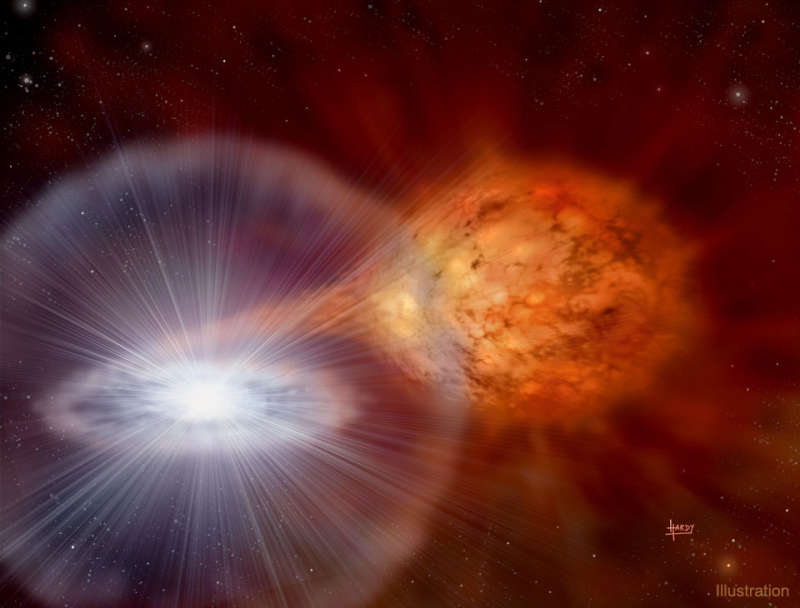Credit & Copyright: David A. Hardy &
PPARC
Explanation:
Spectacular explosions keep occurring in the binary star system named
RS Ophiuchi.
Every 20 years or so, the
red giant star dumps enough
hydrogen
gas onto its companion white dwarf star to set off a brilliant
thermonuclear explosion on the
white dwarf's surface.
At about 5,000 light years distant, the resulting
nova explosions cause the
RS Oph system to brighten up by a huge factor and become visible to the unaided
eye.
The red giant star is depicted on the right of the
above drawing,
while the white dwarf is at the center of the bright
accretion disk on the left.
As the
stars orbit each other, a stream of
gas moves from the giant star to the white dwarf.
Astronomers
speculate that at some time in the
next 100,000 years, enough matter will have accumulated on the
white dwarf to push it over the
Chandrasekhar Limit,
causing a much more powerful and final explosion known as a
supernova.
Starting early this month,
RS Oph was again
seen exploding in a
bright nova.
1999 2000 2001 2002 2003 2004 2005 2006 2007 2008 2009 2010 2011 2012 2013 2014 2015 2016 2017 2018 2019 2020 2021 2022 2023 2024 2025 |
Yanvar' Fevral' Mart Aprel' Mai Iyun' Iyul' Avgust Sentyabr' Oktyabr' Noyabr' Dekabr' |
NASA Web Site Statements, Warnings, and Disclaimers
NASA Official: Jay Norris. Specific rights apply.
A service of: LHEA at NASA / GSFC
& Michigan Tech. U.
|
Publikacii s klyuchevymi slovami:
nova - novye zvezdy - belyi karlik
Publikacii so slovami: nova - novye zvezdy - belyi karlik | |
Sm. takzhe:
Vse publikacii na tu zhe temu >> | |
